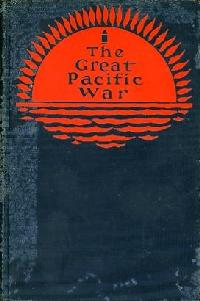The Great Pacific War
Pearl Harbor was ten years late
By William Wetherall
First posted 16 January 2006
Last updated 20 January 2006

Hector C. Bywater Keeler's novel came in 1932 during The Great Pacific War anticipated by Hector Charles Bywater (1884-1940) in a novel by this name first published in Boston and New York in 1925, and twice translated into Japanese the same year. The Publisher's Note to the 1932 edition reads as follows (page v).
So much for good intentions. |

William H. Honan Honan, a correspondent at the New York Times at the time he wrote this book, and the owner of seventeen-foot wooden sailboat he claimed was unarmed, may like to bask in Bywater's glory by calling him a "journalist" -- but Bywater was not writing as a journalist when he penned the non-fictional work Sea Power in the Pacific in 1921, or the fictional story The Great Pacific War in 1925. Bywater was not merely a jounalist. In the by-line, he is billed as an Associate of the Institute of Naval Architechture, an Associate Member of the U.S. Naval Institute, and the author of Sea Power in the Pacific, which was published in [XXXX]. Bywater, a British-born journalist who had become an expert on naval warfare and strategy, unwittingly wrote a blueprint for Yamamoto Isoroku's attack on Pearl Harbor, and the amphibious assaults of Japanese forces on the Philippines. |